Contents
Read about the Major and most important Tribes of India found in each and every state of India with their religion, customs, arts, beliefs, dance forms, festivals, worships and Music forms etc.
Particularly Vulnerable Tribal Groups (PVTGs)
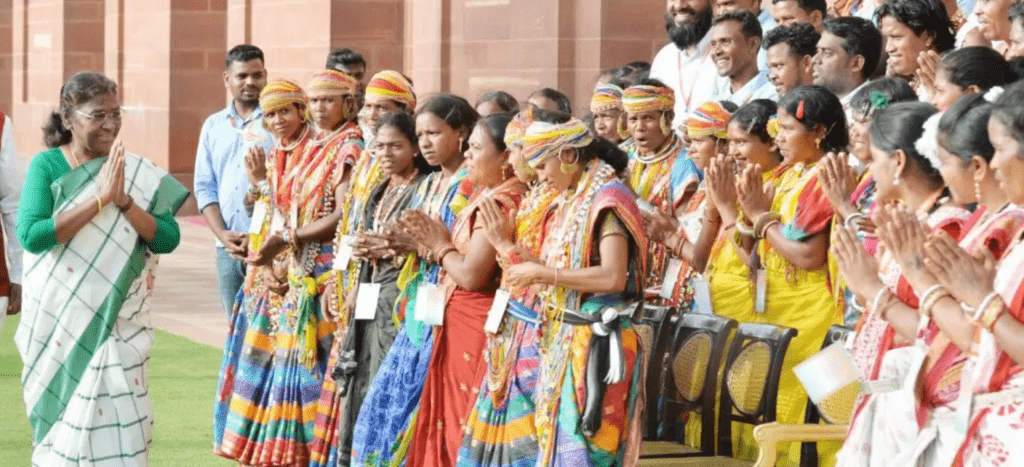
- Earlier known as a Primitive tribal group.
- Sub-classification of Scheduled Tribe.
- Vulnerable Group.
- Resides in 18 States and 1 UT.
- Total of 75 groups were identified as PVTG.
- Dhebar Commission (1960-1961) found that within the Scheduled Tribe classification an inequality existed in the rate of development of certain tribes over others.
- As a result in the fourth Five Year Plan the sub-category “Primitive tribal group” was created within the grouping of Scheduled Tribe to identify groups considered to be especially lacking in modern development.
- PVTG list was created by the Indian Government with the purpose of better improving the living standards of endangered tribal groups based on priority.
- Features of this tribe
- Pre-agricultural system of existence,
- Practice of hunting and gathering,
- Zero or negative population growth,
- Extremely low levels of literacy in comparison with other tribal groups.
| STATE | TRIBES FOUND |
| Andhra Pradesh and Telangana | Bodo Gadaba, Bondo Poroja, Chenchu, Dongria Khond, Gutob Gadaba, Khond Poroja, Kolam, Kondareddis, Konda Savaras, Kutia Khond, Parengi Poroja, thoti |
| Bihar and Jharkhand | Asurs, Birhor, Birjia, Hill Kharia, Konvas, Mal Paharia, Parhaiyas, Sauda Paharia, Savar |
| Gujarat | Kathodi, Kohvalia, Padhar, Siddi, Kolgha |
| Karnataka | Jenu Kuruba, Koraga |
| Kerala | Cholanaikayan (a section of Kattunaickans), Kadar, Kattunayakan, Kurumbas, Koraga |
| Madhya Pradesh andChhattisgarh | Abujh Macias, Baigas, Bharias, Hill Korbas, Kamars, Saharias, Birhor |
| Maharashtra | Katkaria (Kathodia), Kolam, Maria Gond |
| Manipur | Marram Nagas |
| Odisha | Birhor, Bondo, Didayi, Dongria-Khond, Juangs, Kharias, Kutia Kondh, Lanjia Sauras, Lodhas, Mankidias, Paudi Bhuyans, Soura, Chuktia Bhunjia |
| Rajasthan | Seharias |
| Tamil Nadu | Kattu Nayakans, Kotas, Kurumbas, Irulas, Paniyans, Todas |
| Tripura | Reangs |
| Uttar Pradesh and Uttarakhand | Buxas, Rajis |
| West Bengal | Birhor, Lodhas, Totos |
| Andaman and nicobar islands | Great Andamanese, Jarawas, Onges, Sentinelese, Shorn Pens |
Shompen Tribes
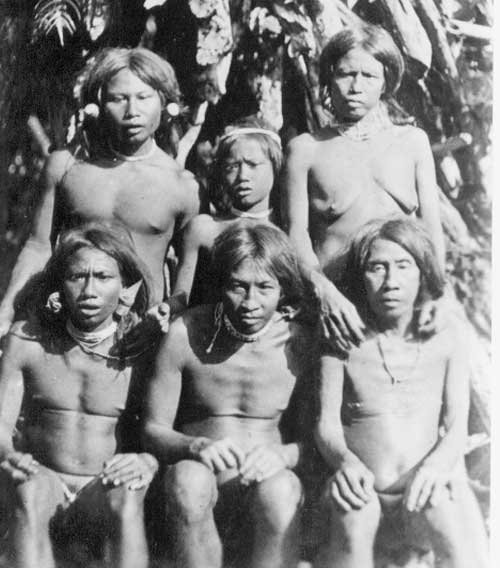
- About Tribe
- Indigenous people of the interior of Great Nicobar Island.
- Designated as a Particularly Vulnerable Tribal Group (PVTG).
- They practice a hunter-gatherer subsistence economy.
- The traditional attire for men is a short, thin loincloth made of bark cloth, covering only the genitals without a ‘tail’ of cloth in front.
- Women wear a knee-length skirt of bark cloth, occasionally with a shawl of bark cloth covering the shoulders.
- Decorations include bamboo ear plugs (ahav), bead necklaces (naigaak) and armbands of bamboo (geegap).
- The main weapons are the bow and arrow.
- Numerous types of spears, spear throwers, fire drills and a hatchet are the main tools.
- A polling station was set up in their area for election of 2014. Shompen people for the first time participated in the democratic process.
- Threat to tribe
- Due to proposed Great Nicobar Development Plan, hectares of land on Great Nicobar Island will be reclaimed and may impact 1,700 people including many Shompens.
Warli Tribes
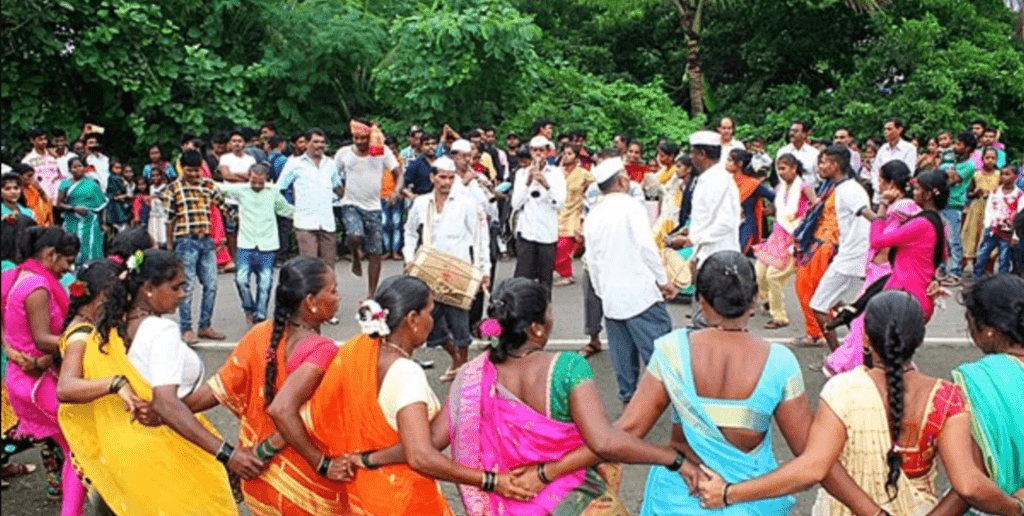
News – Warli tribe in Mumbai objects to construction of Shivaji museum.
- Indigenous tribe of western India.
- Have their own animistic beliefs, life, customs and tradition and thus, have adopted many Hindu beliefs.
- Warli speak the unwritten Varli language which belongs to the southern zone of the Indo-Aryan languages.
- Have sub castes such as Murde varli, Davar varali.
- Found in –
- Jawhar, Vikramgad, Mokhada, Dahanu and Talasari talukas of the northern Palghar district and parts of Nashik and Dhule as well as Navapur taluka of Nandurbar of Maharashtra,
- Valsad, Dangs, Navsari and Surat districts of Gujarat,
- UT of Dadra and Nagar Haveli and Daman and Diu.
- Warli painting is the cultural intellectual property of the tribal community.
- They were traditionally semi-nomadic. They lived together in small-scale groups with a headman leading them.
- However, recent demographic changes have transformed the Warli today into mainly agriculturists. They cultivate many crops like rice and wheat.
- Warli women wear toe-rings and necklaces as a sign of being married.
- Some Warli practice polygyny.
Toda Tribes
Registrar of Geographical Indication gave GI status for this unique embroidery, a practice which has been passed on to generations. The status ensures uniform pricing for Toda embroidery products and provides protection against low-quality duplication of the art.
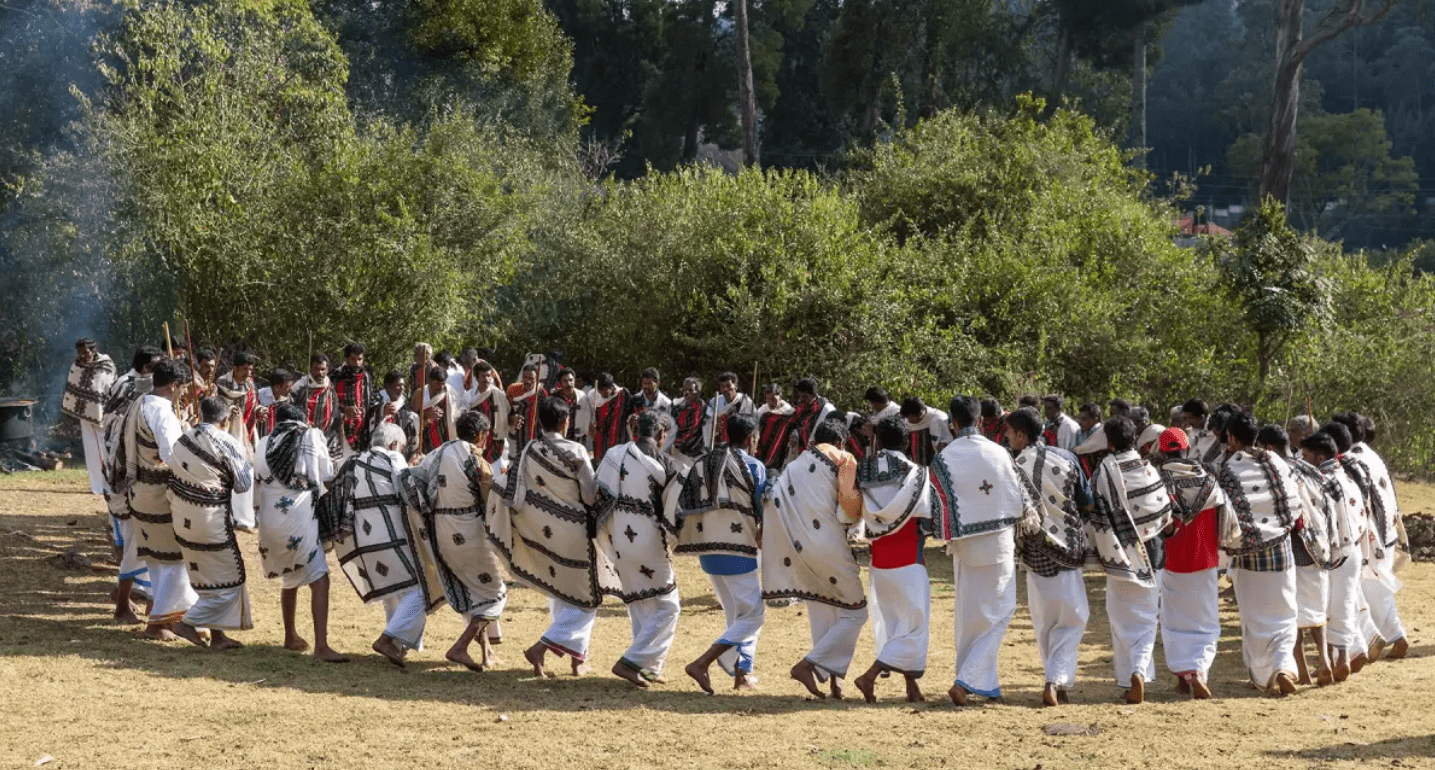
- Dravidian ethnic group resides in Tamil Nadu, India.
- They are usually pastoral people.
- Population in India – 2002 (According to 2011 census)
- Religion – Toda religious life and practices stem from a pantheon of gods. The heads of this pantheon are the goddess Tökisy and the god of the underworld Ön. These two deities form the basis of many religious practices and rituals, but each Toda clan has their own nòdrochi, a deity seen as that clan’s ruler during the time that the Todas and gods lived together. In total, there are between 1,600 and 1,800 gods.
- Food – Vegetarians and do not eat meat, eggs or fish.
- Housing – They resides in small hamlets called Munds. They also built Toda huts, called dogles, which are of an oval, pent-shaped construction with sliding door. This sliding door is placed inside the hut, and is arranged and fixed on two stout stakes, as to be easily moved back and forth.
- Marriages – They mainly practice Fraternal Polyandry, it is a practice in which a woman marries all the brothers of a family and all the children of such marriages were deemed to descend from the eldest brother.
- Main Occupation – Cattle Herding and Dairy Work.
- The men of this tribe wear dhoti as a wrap whereas women wear skirt and shawl wrap.
- Toda lands are now a part of the Nilgiri Biosphere Reserve.
- Toda tribe has a dry funeral ceremony that takes place 9 months after cremation.
- Toda tribe’s embroidery features a symbolic color scheme of Black (representing underworld), Red for earth, and White for the celestial and is called “pukhoor”.
Modhweth Festival
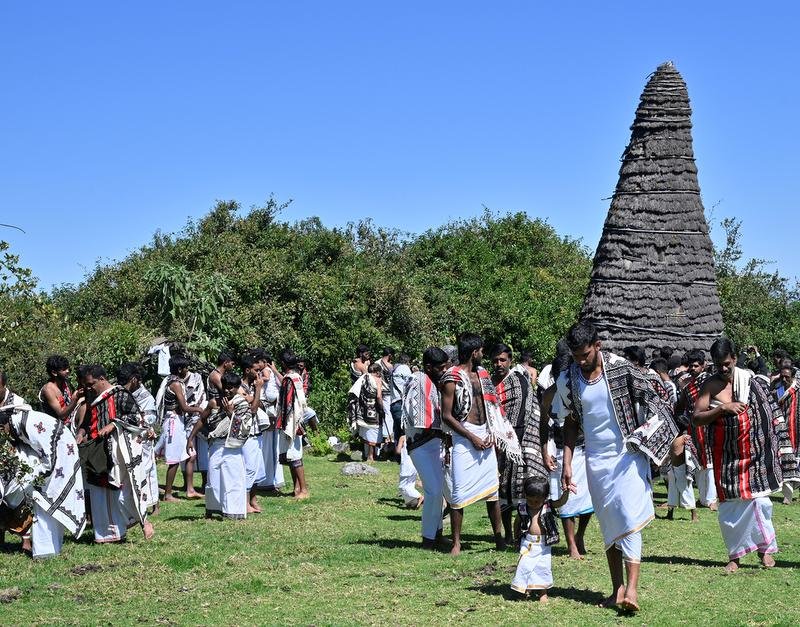
- Annual festival celebrated by Toda tribes which takes place in late December or early January.
- Also known as the Buffalo Festival.
- Mainly celebrated at the Moonpo temple in Muthanadu Mund (village) in the Nilgiri district.
- Moonpo temple is an ancient temple known for its vertical spire made of thatched roof with a flat stone on the top. This temple is unique as it is one of the last of the Toda temples with a similar design left in the Nilgiris.
- Toda men from 14 different clans living in different villages in the upper slopes of the Nilgiris comes to the village to celebrate this festival.
- As part of the celebrations, the Toda tribe people offer prayers to their deities, Thenkish Amman, and perform a dance outside the temple. They pray to the deity for good health, rains and harvests during the coming year.
- As per the customs, women were excluded from taking part in these celebrations.


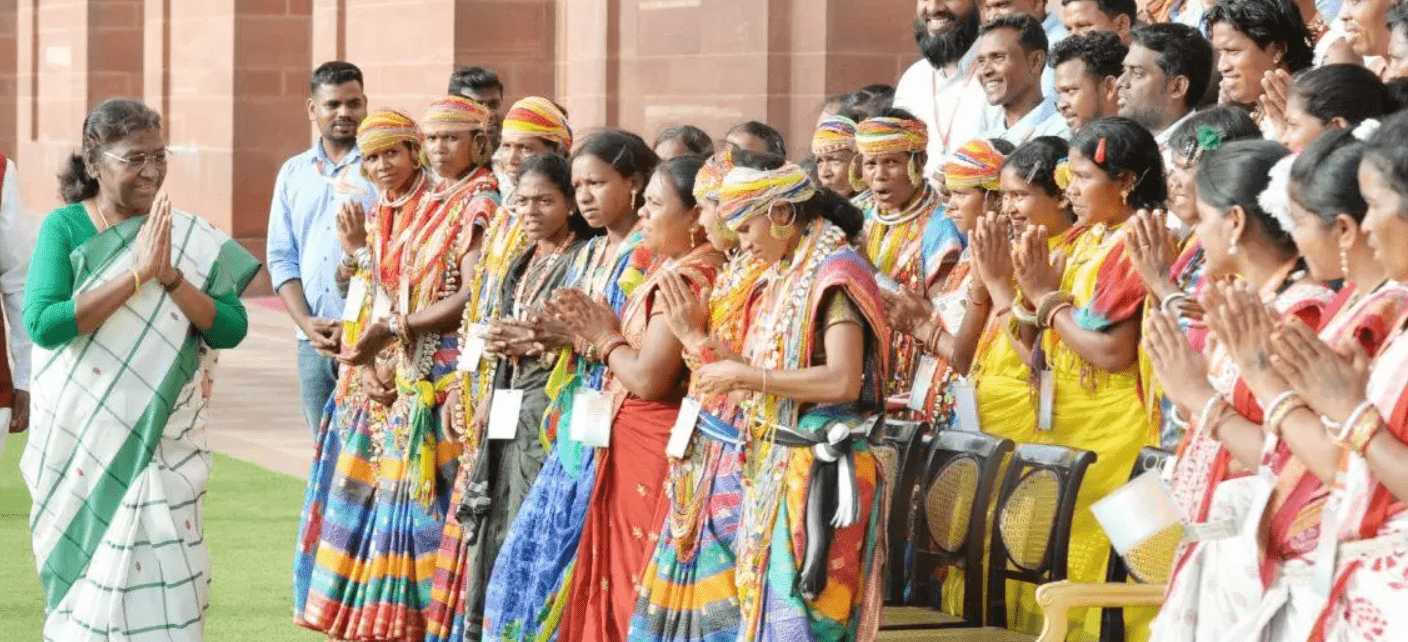
Leave a Reply
You must be logged in to post a comment.